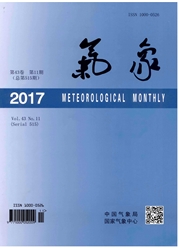

 中文摘要:
中文摘要:
利用中国气象局提供的观测资料研究了2010—2014年华南雷暴大风和普通雷暴的空间分布特征,并将华南春夏两季雷暴大风和普通雷暴的大尺度环境条件进行对比。结果表明:研究的华南区域08—20时(北京时)夏季雷暴大风略多于春季,而普通雷暴夏季样本数约为春季的3.6倍,雷暴大风主要发生在粤西到珠江三角洲地区。相比于普通雷暴,雷暴大风天气发生的环境条件具有更强的条件性不稳定,斜压性和动力强迫更强。春季雷暴大风发生时环境中的大气可降水量和中高层湿度均比普通雷暴更大,而夏季反之。华南春季雷暴动力条件明显优于夏季,而夏季热力强迫的作用大于春季。
 英文摘要:
英文摘要:
The spatial distributions of severe convective wind (SCW) and nonsevere thunderstorms (NT) over South China, occurring between 08:00 BT and 20:00 BT during spring and summer in 2010-2014, were analyzed by using the observational data from China Meteorological Administration. And then, their environmental characteristics were compared between SCW and NT in spring and summer. It was found that SCW in summer is more frequently than that in spring and that NT in summer is about 3.6 times the counts of NT in spring. SCW events mainly concentrate in the western Guangdong to the Pearl River Delta Region. Compared to NT, SCW is generally associated with stronger baroclinity, instability and stronger dynamic forcing. The precipitable water and averaged relative humidity between 700-500 hPa of SCW tend to be higher than those of NT in spring, while the opposite is the case for the pattern in summer. In conclusion, it is obvious that the dynamic forcing for SCW in spring is much better than these in summer, while the thermal condition is more significant in summer.
 同期刊论文项目
同期刊论文项目
 同项目期刊论文
同项目期刊论文
 期刊信息
期刊信息
